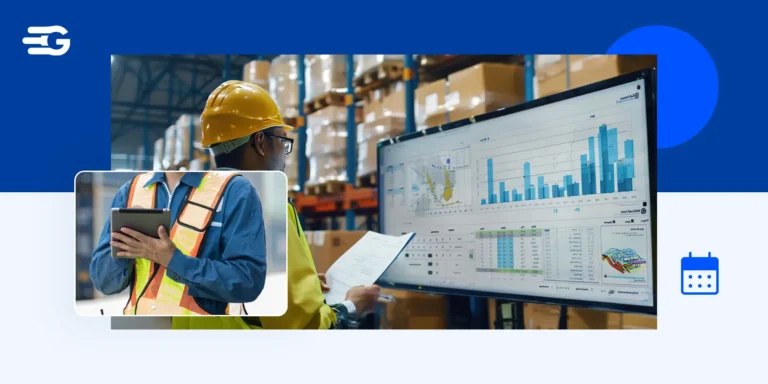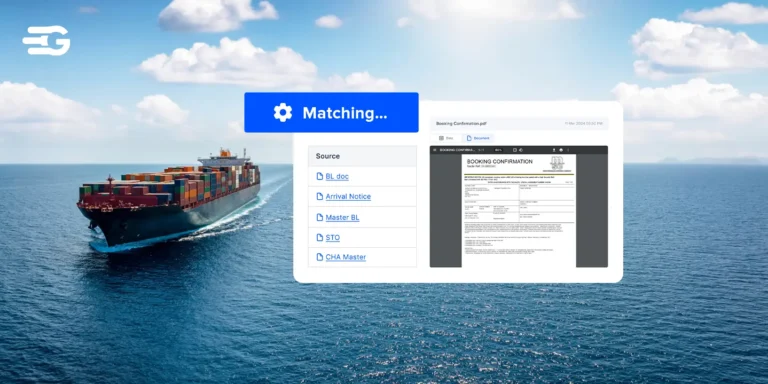Best Supply Chain Management Software for Small Businesses in 2025
In today’s fast-paced global economy, small manufacturers are increasingly competing with larger enterprises—not just on product quality but also on efficiency, agility, and customer satisfaction. To thrive in this environment, having the right Supply Chain Management (SCM) software is no longer optional; it’s essential.
The good news? In 2025, a wide range of SCM tools has emerged that are both powerful and affordable, catering specifically to the needs of small manufacturers. Whether you’re managing a few suppliers or coordinating shipments globally, the right platform can drastically reduce costs, improve inventory accuracy, and enhance delivery timelines.
In this blog, we’ll explore the best SCM software options for small manufacturers in 2025, key features to look for, and how to choose a solution that fits your business.
Why Small Manufacturers Need SCM Software
- Inventory Optimization: Avoid stockouts or overstocking by managing inventory levels efficiently.
- Real-Time Visibility: Track shipments, supplier performance, and production schedules on one platform.
- Cost Control: Automate procurement, reduce manual errors, and gain insights into cost-saving opportunities.
- Supplier Collaboration: Strengthen supplier relationships with better communication and performance tracking.
- Scalability: Prepare for growth with tools that can evolve with your business.
Key Features to Look For in SCM Software
- Ease of Use: A clean, intuitive interface is a must, especially for small teams.
- Integration: Compatibility with ERP, accounting, or CRM systems like QuickBooks, Xero, or Zoho.
- Cloud-Based Access: Enables remote collaboration and scalability without high IT costs.
- Demand Forecasting: Helps with better planning based on market trends and historical data.
- Order & Inventory Management: Centralizes order tracking and inventory control.
- Affordability: Pay-as-you-grow pricing models suited for limited budgets.
Top Supply Chain Management Software for Small Manufacturers in 2025
1. GoComet
Visit GoComet » https://gocomet.com/
Best for: Manufacturers needing real‑time shipment visibility and smarter freight purchasing.
Why it stands out:
GoComet centralizes multimodal tracking—ocean, air, rail, and road—into one dashboard. It ingests carrier EDI, GPS, and IoT sensor feeds to power AI‑driven ETA predictions that are right 9 times out of 10. When you need to book freight, GoComet automatically issues RFQs to multiple carriers, compares rates, and selects the optimal option—cutting your procurement cycle by up to 40%. Custom alerts flag exceptions (delays, dwell time spikes, carbon‑emissions thresholds), so you can act before small issues become big disruptions.
Top features:
- Predictive ETAs: AI models blend multi‑source data for 90%+ accuracy.
- Automated RFQs: Send quotes to 10+ carriers in one click.
- Custom dashboards & alerts: Monitor on‑time performance, dwell time, emissions.
- Plug‑and‑play integrations: APIs for SAP, NetSuite, major TMS and carrier platforms.
Pros:
- Rapid setup—go live in days, not weeks
- Data‑driven cost savings on every shipment
- Highly customizable notifications
Cons:
- No built‑in production‑planning module
- Advanced analytics require higher‑tier plan
2. Katana Cloud Manufacturing
Visit Katana » https://katanamrp.com/
Best for: Light‑manufacturing shops (apparel, electronics, furniture) that need visual production planning.
Why it stands out:
Katana’s drag‑and‑drop scheduler shows your entire production pipeline at a glance. As sales orders come in, the system auto‑reserves inventory, calculates component needs, and updates stock levels in real time—slashing discrepancies by up to 60%. Batch and expiry tracking keep you compliant with food, pharma, or chemical regulations, while built‑in labor and overhead costing delivers precise job‑cost breakdowns.
Top features:
- Visual Planner: Finite‑capacity scheduling with instant conflict alerts.
- Live Inventory: Automatic BOM consumption and replenishment triggers.
- Cost Roll‑Up: Labor, materials, and overhead fully accounted per order.
- E‑commerce & Accounting Integrations: Shopify, WooCommerce, QuickBooks, Xero.
Pros:
- Ultra‑intuitive UX—minimal training needed
- Rich community forum and knowledge base
- Scales smoothly from a single line to multi‑line operations
Cons:
- Limited deep‑customization for highly specialized workflows
- No integrated freight or logistics module
3. Fishbowl Manufacturing
Visit Fishbowl » https://www.fishbowlinventory.com/
Best for: Businesses with heavy inventory turnover that rely on QuickBooks for accounting.
Why it stands out:
Fishbowl injects advanced inventory controls into QuickBooks, adding FIFO/LIFO costing, cycle‑count scheduling, and barcode‑driven picking. Its work‑order engine handles discrete and batch production: raw materials are auto‑reserved, pick lists auto‑generated, and finished‑goods quantities updated in both Fishbowl and QuickBooks—eliminating manual journal entries.
Top features:
- Multi‑location Inventory: Track stock across warehouses, use FIFO/LIFO.
- Automated Work Orders: BOM‑driven raw‑material reservation and pick‑list creation.
- Barcode & Mobile WMS: Wave picking, cycle counts, mobile scanning.
- Reorder Automation: Safety‑stock and reorder‑point triggers.
Pros:
- Deep, seamless QuickBooks integration
- One‑time license option lowers long‑term costs
- Robust WMS boosts warehouse throughput by 30%
Cons:
- UI feels dated compared to modern cloud‑first tools
- On‑prem deployment can add IT overhead
4. NetSuite by Oracle (SuiteSuccess)
Visit NetSuite SuiteSuccess » https://www.netsuite.com/portal/industries/manufacturing.shtml
Best for: Small manufacturers planning rapid growth and global expansion.
Why it stands out:
SuiteSuccess ships with prebuilt KPIs, workflows, and dashboards tuned for manufacturing—getting you live in ~100 days. It unites financials, order management, production scheduling, procurement, and CRM in one cloud instance. Forecasting uses statistical models with seasonality and trend adjustments, boosting accuracy by 15–20%. Multi‑currency and multi‑subsidiary features simplify international operations, while vendor scorecards drive supplier performance improvements.
Top features:
- End‑to‑end ERP: From quote to cash, all modules talk in real time.
- Advanced Forecasting: Statistical and collaborative demand planning.
- Global Operations: Multi‑currency, tax, and compliance management.
- Vendor Management: Scorecards, SLAs, and performance analytics.
Pros:
- Truly unified platform—no bolt‑ons required
- Rapid, guided implementation methodology
- Backed by Oracle’s support ecosystem
Cons:
- Higher entry cost; better for manufacturers with $5M+ revenue
- Requires change management and training
5. Cin7 Core (formerly DEAR)
Visit Cin7 Core » https://www.cin7.com/
Best for: Omnichannel producers who need tight control over order flow and stock.
Why it stands out:
Cin7 Core merges inventory, production, and order management with native connectors to Amazon, eBay, Shopify, and major shipping carriers. Its production module auto‑creates manufacturing orders when stock dips below min/max thresholds, and calculates landed costs across purchase orders, duties, and freight—ensuring true cost‑of‑goods accuracy.
Top features:
- Batch & Serial Tracking: Full traceability from raw materials to finished goods.
- Landed Cost Automation: Duties, freight, and fees rolled into inventory cost.
- Multi‑channel Sync: Real‑time stock updates across sales platforms.
- Custom Reporting: Export to Power BI or build native dashboards.
Pros:
- Affordable tiered pricing with essential features included
- Quick ramp‑up via prebuilt integrations
- Scales seamlessly as sales channels grow
Cons:
- Some specialized modules (e.g., advanced reporting) cost extra
- UI can slow when handling very large datasets
6. QuickBooks Commerce
Visit QuickBooks Commerce » https://quickbooks.intuit.com/commerce/
Best for: Pure QuickBooks shops that need basic inventory and order control.
Why it stands out:
Built by Intuit, QuickBooks Commerce lives inside QuickBooks Online—no duplicate bookkeeping. You get multi‑location inventory, purchase orders, and basic demand forecasting driven by moving averages. Auto‑reorder rules fire POs when stock dips below thresholds. Integrations with Etsy, Amazon, and Shopify keep e‑commerce stock accurate without manual updates.
Top features:
- Embedded in QuickBooks: One ledger, one login.
- Reorder Automation: Set min/max levels, let the system trigger POs.
- Channel Sync: Auto‑adjust inventory for sales on Amazon, Etsy, Shopify.
- Basic Forecasting: Moving‑average demand projections.
Pros:
- Easiest path for existing QuickBooks users
- Low monthly fee; no hidden costs
- Minimal setup—ready in hours
Cons:
- No production‑planning or advanced MRP features
- Forecasting is rudimentary
7. Zoho Inventory
Visit Zoho Inventory » https://www.zoho.com/inventory/
Best for: Startups and micro‑manufacturers on tight budgets needing core inventory controls.
Why it stands out:
Zoho Inventory delivers order management, warehouse tracking, and shipping integrations at a price point starting free. Its low‑code workflow engine can auto‑send POs, update stock, or notify teams when defined triggers fire. Batch/expiry tracking, audit logs, and multi‑warehouse support add enterprise‑grade controls. Native links to Zoho Books keep accounting in sync, while mobile apps empower barcode scanning on the go.
Top features:
- Freemium Plan: Up to 20 online and offline orders/month at no cost.
- Workflow Automation: Custom functions for reorder, notifications, and more.
- Batch & Expiry Tracking: Essential for regulated goods.
- Courier Integrations: Real‑time shipping rates and label printing.
Pros:
- Start free, upgrade as you grow
- Highly customizable without code
- Comprehensive audit trails for compliance
Cons:
- Performance can lag with >10,000 SKUs
- Lacks full manufacturing resource planning (MRP)
How to Choose the Right SCM Software
- Define Your Needs: Are you looking for better inventory control, production tracking, or logistics visibility?
- Check Integration Options: Ensure the software integrates with tools you already use—whether it’s QuickBooks, Shopify, or ERP systems.
- Consider Budget & Pricing Models: Some platforms offer subscription-based pricing; others require a one-time license fee.
- Test with a Free Trial or Demo: Most platforms offer demos or trials—use them to explore the interface and workflow.
- Scalability & Support: Choose a solution that can grow with you and provides reliable customer support.
Final Thoughts
The right SCM software can be a game-changer for small manufacturers in 2025. Whether you’re optimizing freight with GoComet, streamlining production with Katana, or managing inventory with Fishbowl, there’s a tool tailored to your scale and needs.
As technology becomes more accessible, small businesses have the opportunity to compete on equal footing with larger players. Investing in a smart, scalable SCM system today could be the decision that defines your success tomorrow.






